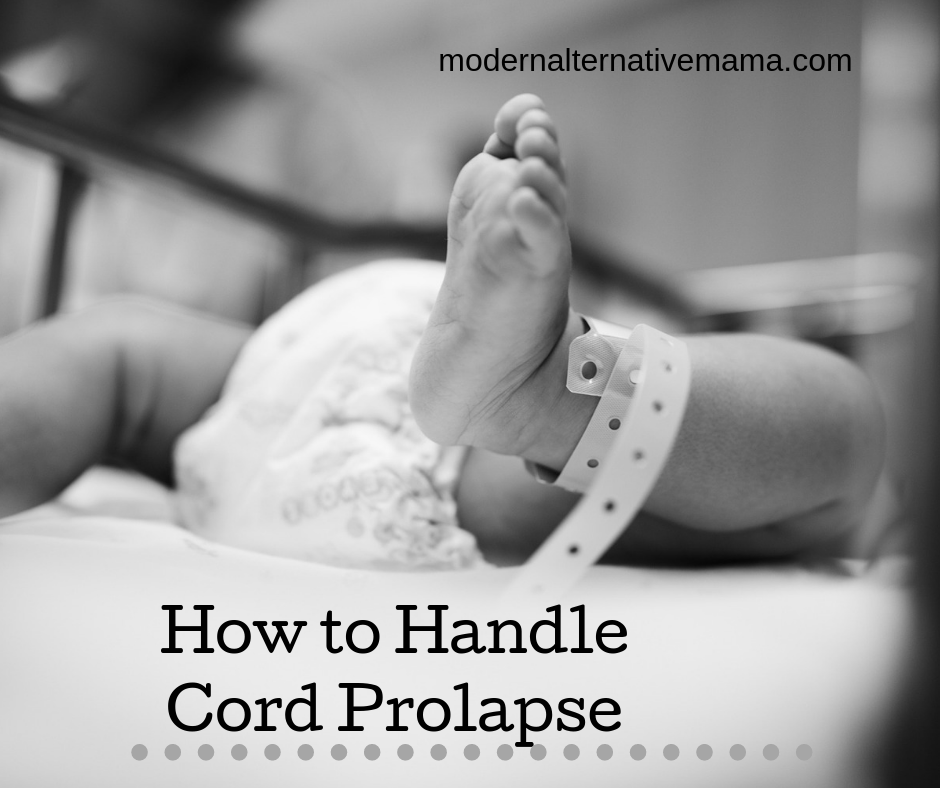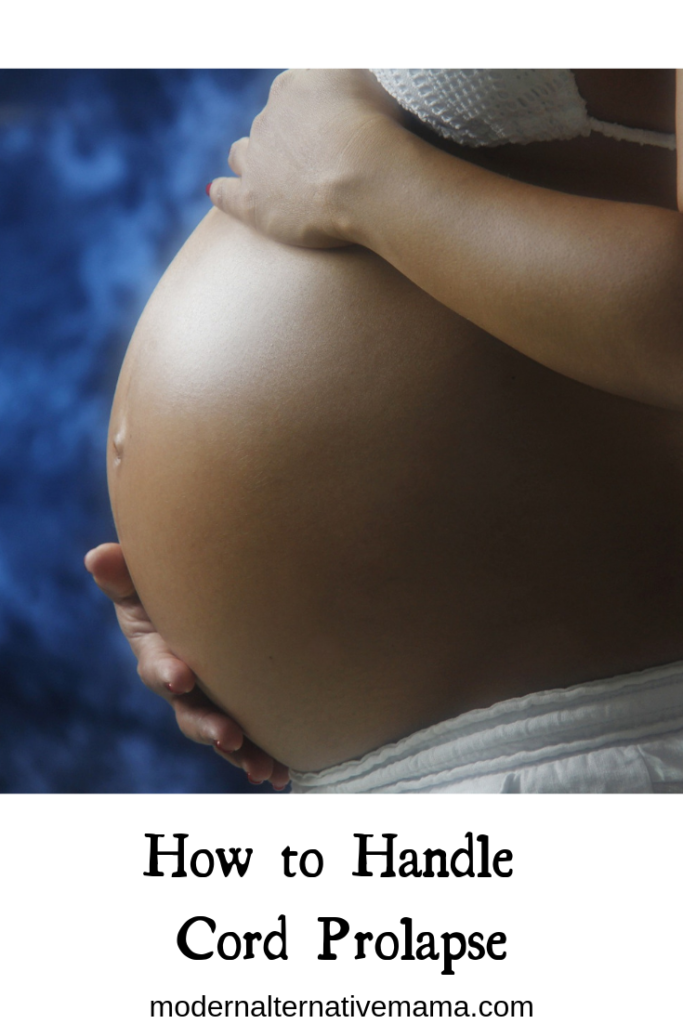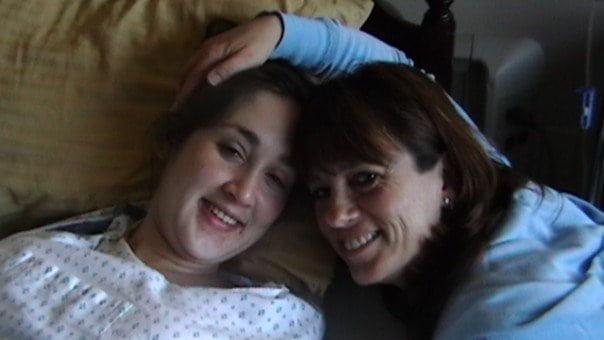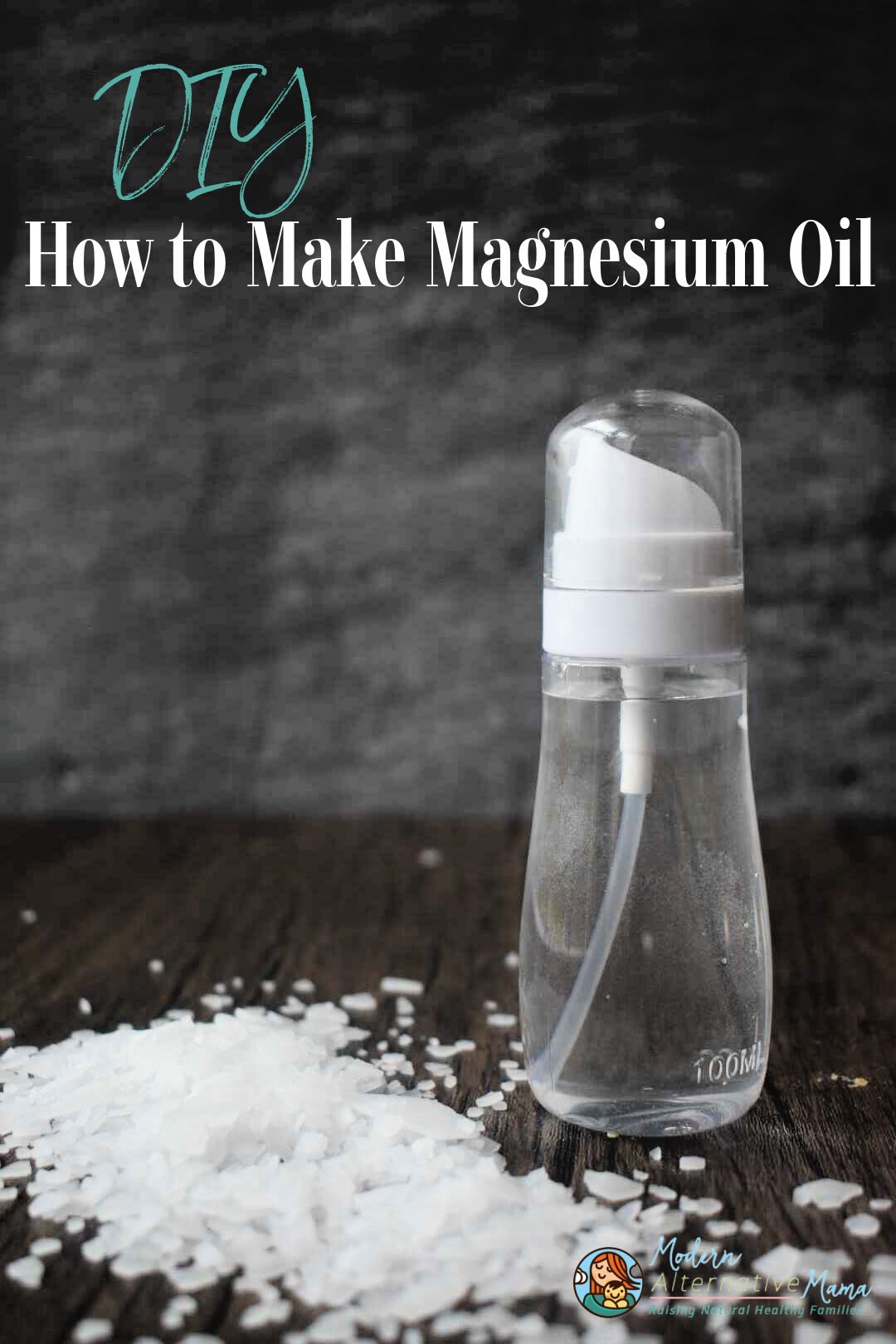By Danielle, Contributing writer
A prolapsed cord occurs when the baby’s umbilical cord falls into the vagina, with or beyond the presenting part of baby’s body. This can constrict the cord, decreasing or even cutting off the flow of blood and oxygen to baby. This normally occurs following a woman’s water breaking, and the head comes down onto the cervix, squishing the cord. A breech presentation may not prove to be an issue. With a cord prolapse, a small portion may protrude, or a larger portion which can be seen out of the vagina.
Chances of a prolapsed cord are 0.1 to 0.6%. The likelihood increases for preterm babies, multiple gestations, and following certain procedures, such as a cervical ripening balloon, articifial rupture of membranes, or fetal blood sampling. Though most physicians in hospitals will jump to a cesarean section, research demonstrates that whatever method will get the baby out fastest is best, including a vaginal delivery if the woman is in second stage labor. Delivery should occur within 30 minutes of prolapsed cord, but if measures are taken to remove pressure from the cord, a baby can survive longer. Mortality rates from a prolapsed cord are anywhere from 4-44%, largely depending on where the cord prolapse occured and the education and skill of the woman and her physician.
How to Help Prevent a Prolapsed Cord
Ensuring your baby is in optimal position may help prevent a prolapsed cord. Ask your physician or midwife at each appointment what position the baby is in. Do Spinning Babies exercises daily throughout your pregnancy, and stay active. Spinning Babies suggests that pregnant women work up to walking 3 miles per day. Eat a protein-packed diet, with plenty of organic fruits and vegetables, as well as dates (for minerals) and eggs (for a strong bag of waters). Regular chiropractic adjustments throughout pregnancy can also help baby stay in an optimal position, as it will loosen your ligaments providing more space in the pelvis.
Create a birth plan and be sure you have a supportive provider to prevent unnecessary interventions during labor to limit the chances of a prolapsed cord.
How to Handle Cord Prolapse
If you are at home, or by yourself, when your water breaks, check these things:
- First, look at the water. Is it clear? Does it have any black tinged spots? If so, call your midwife or physician immediately. This is meconium, the baby’s first poop, and can mean the baby is suffering distress.
- Second, notice if the baby has suddenly started moving less. If so, or you feel concerned for any reason (trust your intuition) have your partner check inside of your vagina for a sausage-like cord. (Your care provider can do this if they are with you).
If you do feel a sausage-like cord, then your cord may be prolapsed. To be safe, assume it is, and do these things immediately:
- Lay on your back, with your hips raised over your head. Have your partner put pillows under your hips and ensure that your lower trunk and legs are raised at all times.
- Have your partner put their hand inside of your vagina, and push back gently the baby’s head. This will take the pressure off of the cord, and allow blood and oxygen flow to the baby.
- Have your partner with their other hand call your midwife or physician.
- If you are alone, prop up your legs as high as possible and call your midwife or physician immediately.
- A well-trained midwife may be able to push the cord back into the vagina. You or your partner should not try this yourself. Most physicians in the hospital will not try this, but opt for an emergency cesarean section.
- If you cannot get a hold of your provider, call 911.
- Assure the mother that all is well, and to breathe deeply.
Though a number of serious complications can occur during birth, taking steps to prevent them and being educated on the possibilities and how to handle an issue will greatly lessen the chances of a negative outcome. Know how to handle a prolapse cord regardless of where and how you intend to birth.








Hi! I’m kind of a nerd who just found your blog! I was wondering, what is the mechanism for a high protein diet reducing the risk of a prolapsed cord? The paper you linked said that incidence of UCP was decreasing due to use of caesarean section for breech presentation.